A place for students and cultural explorers to experience the immersive beauty of Japanese tea ceremony and other traditional arts.
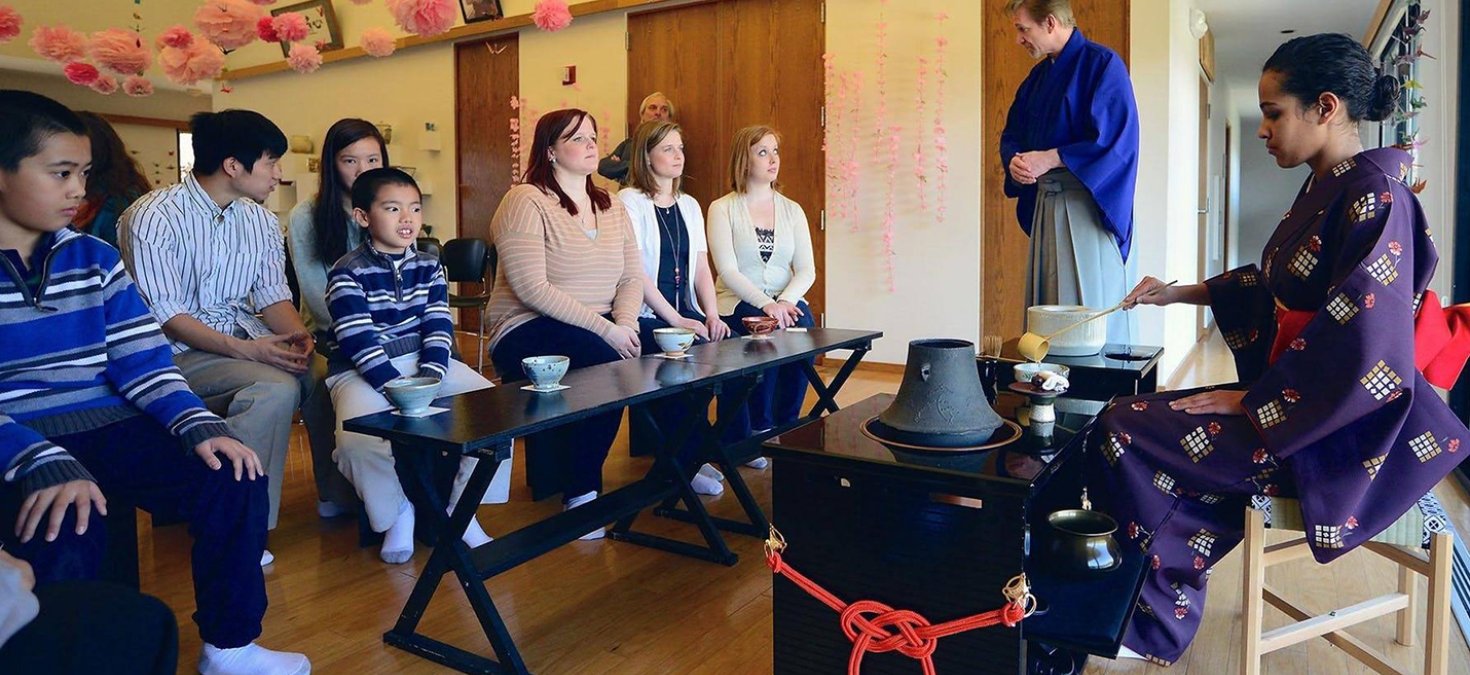
Japan House is a teaching establishment, made up of a Japanese tea rooms, class space, and surrounded by Japanese gardens. The environment of Japanese aesthetics both inside and outside makes for an immersive experience. Even without taking part in the tea ceremonies, classes, workshops and performances, a visitor can learn about Japanese culture just by absorbing the Japanese influence and aesthetics.
Japan House is a unit of the College of Fine and Applied Arts at the University of Illinois at Urbana-Champaign. It has both University classes for academic credit, as well as community classes open to the general public. Although it is not a cultural center for Japanese students, it often becomes a home away from home to Asian students because of its traditional stylings and peaceful environment.
Japan House aims to make the beauty of traditional Japanese art and aesthetics accessible to everyone.
It is the mission of Japan House to bring about cultural understanding, to offer exposure to new perspectives via Japanese culture, and, ultimately, to give our guests a chance to embrace tranquility in an immersive Japanese environment. The very core of this approach, and of Japan House studies is Chado, the Way of Tea. This ancient and revered Japanese practice brings together numerous Japanese arts and traditions.
“Cultural understanding can begin with a bowl of tea.”
Director, Jennifer Gunji-Ballsrud
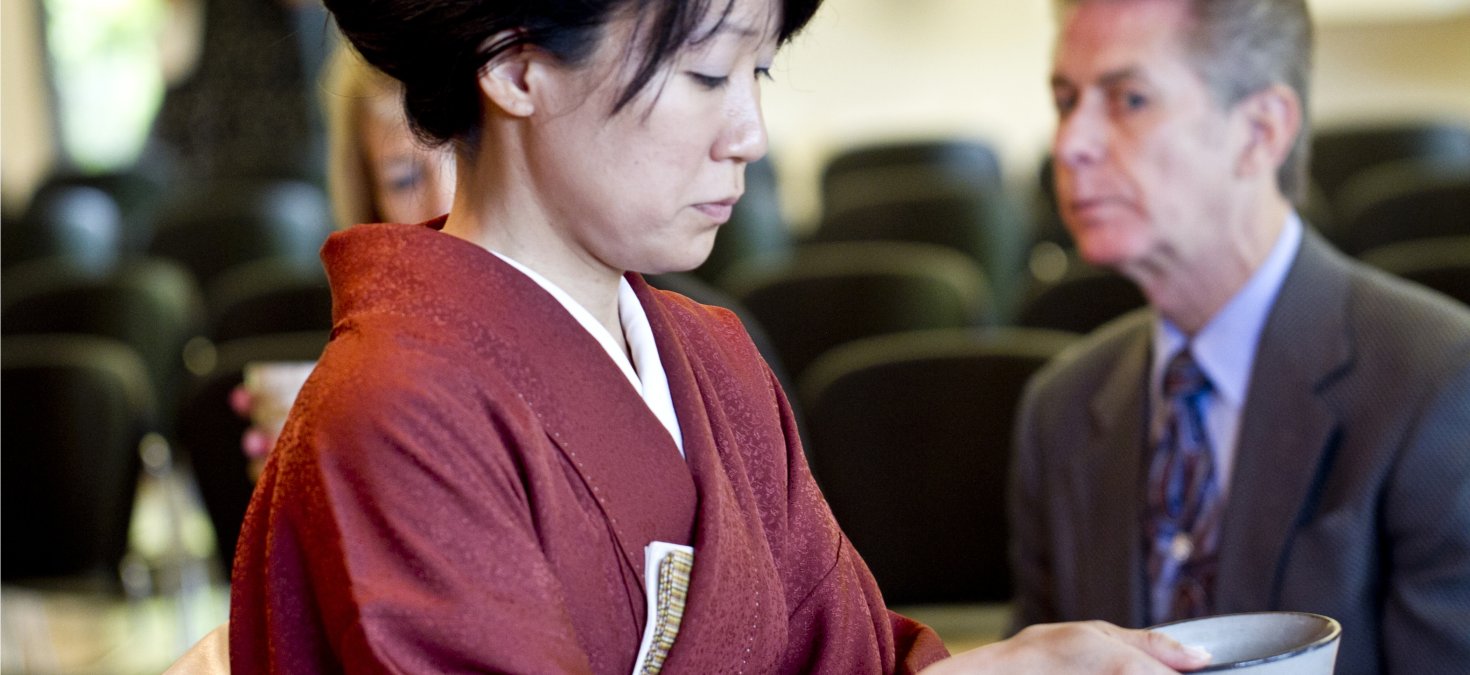
Everyday we cannot help but feel already consumed by all that needs to be accomplished. In our very busy lives, we yearn for moments of quietude. Most of the time, we deprive ourselves of time to just be. Ironically, it seems easier to bury ourselves in more and more of our already overwhelming lives. We can quickly find ourselves consumed, drained and depleted.
All of us could use a moment of tranquility. We all could strive to be more harmonious, pure, and ultimately, more respectful with all of our relations. I hope that Japan House can provide all who visit the encouragement to not allow these feelings to be fleeting, but to engrain these feelings in your very being.
Japan House is here for all of you to help strengthen your inner self, to provide a moment of clarity, and to resonate the vitalness of harmony, respect, purity and tranquility in our daily lives.
Jennifer Gunji-Ballsrud,
Director of Japan House
Diana Liao, Education And Engagement Specialist
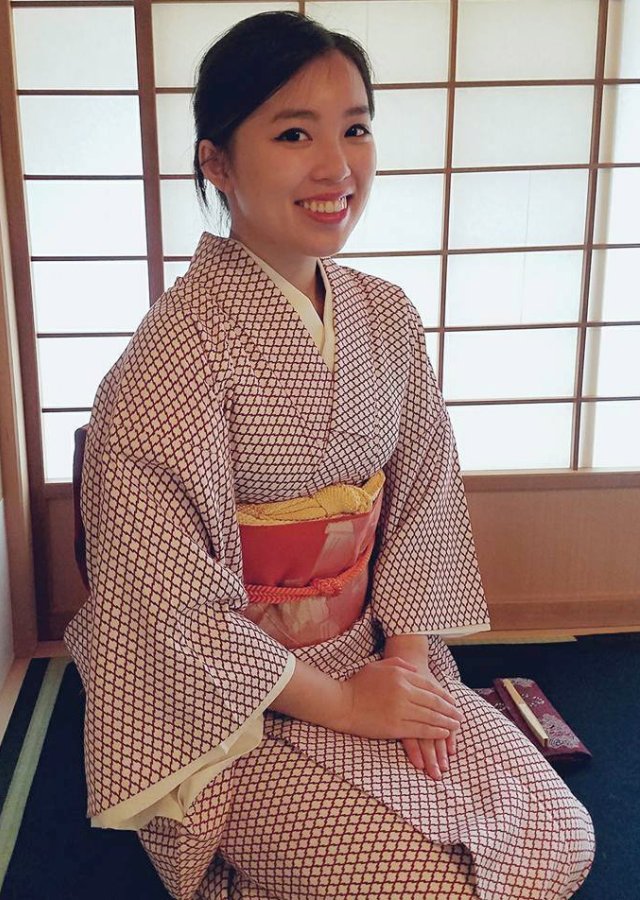
Sydney Nielsen, Engagement Coordinator
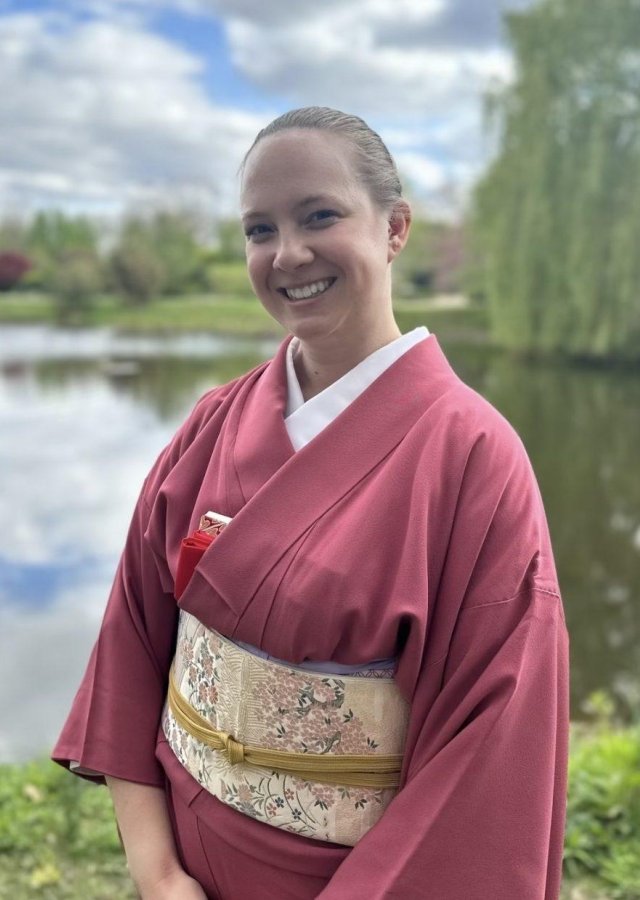
Lisa Akins, Office Manager/Pastry Chef

Sumie Burten, Tea Specialist
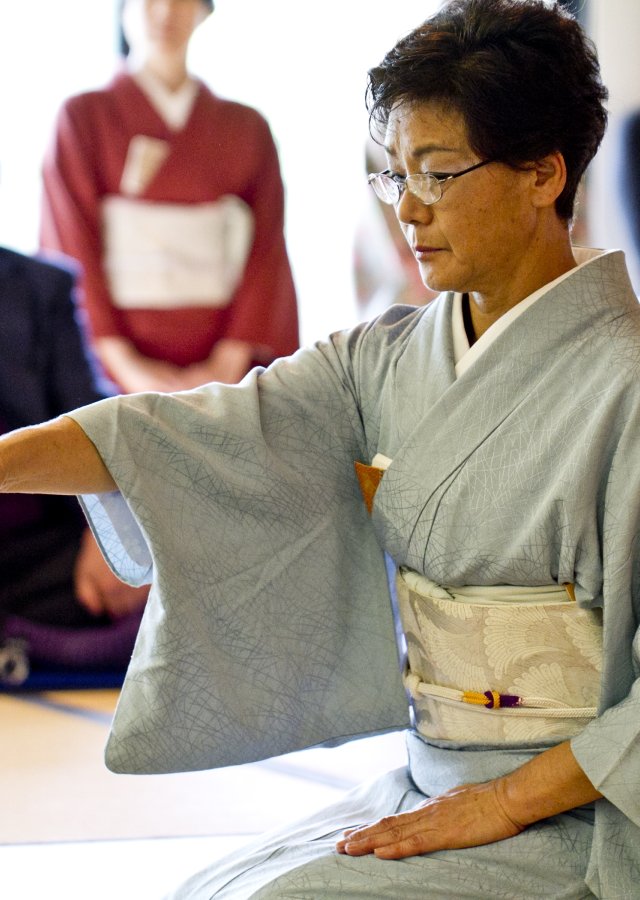
Kimiko Gunji

Kimiko Gunji, founder of the new Japan House within the Arboretum, is Professor Emeritus of Japanese Arts and Culture in the School of Art & Design, University of Illinois at Urbana-Champaign. Starting in 1979, she taught the Chado (The Way of Tea), Zen Aesthetics, Ikebana (Japanese flower arranging), and the Campus Honors Program Seminar: Rigidity and Flexibility in Japanese Arts and Culture.
Starting as the teaching assistant with Shozo Sato, she became Director of the old Japan House when he retired until it was demolished in 1992, and then at the new Japan House from 1998-2011.
Gunji is a full professor of the Ikenobo Ikebana School (Japanese flower arranging) in Japan and Chapter President of the Illinois Prairie Ikenobo Ikebana. Her Ikenobo Ikebana teacher’s name is Kiyomi (清美). She holds Chamei: Souki (宗紀) from the Urasenke Tea School and serves as President of the Urbana-Champaign Association of Chado Urasenke Tankokai Urbana-Champaign Association. She also holds a teaching certificate of Japanese classical dance.
Kimiko Gunji received numerous awards for her teachings as well as her contributions to promote Japanese arts and culture. Among them were University of Illinois Campus Award for Excellence in Undergraduate Teaching, Illinois Arts Council Fellowship in the Field of Ethnic and Folk Arts, the commendation from the Foreign Ministry in Japan for her contribution to promote and strengthen the ties of friendship and goodwill between the United States and Japan.
In June 2012, she was honored with one of the most prestigious cultural awards designated by the Emperor of Japan, the Order of Rising Sun. This order is awarded by the Emperor for significant achievement in international relations or promotion of Japanese culture.
It is only with the dedication, determination, support and vision of Kimiko Gunji that Japan House exists, and is able to exist in the future! Her legacy reaches beyond the walls of a structure, as it lives within the heart of every student and guest who visits Japan House.
Although Gunji Sensei is also retired, she continues to teach classes at Japan House and also in Rockford, Illinois.
James Bier

In 2000, James Bier of Champaign, began the development of the Japan House gardens which now surround the building. These gardens and the surrounding ponds made a visit to Japan House an immersive experience and strengthened the way in which it could wordlessly teach about Japanese aesthetics and the quest for tranquility during the tea ceremony and in the gardens.
As a teenager, Jim Bier loved art. He involved himself in painting, woodworking, carvings, fine arts and music. Bier loved music so much that he considered going to college to study music and to continue his training in piano. In college, however, he decided to work toward an undergraduate degree in geology. He absorbed his studies wholeheartedly and enjoyed every moment of it. Bier graduated in 1953 from Case Western Reserve University. After his studies, Bier was drafted into the army at the end of the Korean War. While he was in training, the war ended. It was then that he was sent to Japan. Bier fell in love with Japan, the culture and the captivating beauty of the country. He traveled extensively during his time there, from climbing in the mountains to exploring the vast amount of culture. When Bier returned, he was admitted to the University to pursue a master’s degree in cartography. He graduated from the University in 1957and was offered a job in the geography department at the University.
He began working full time, and after about eight years, he had saved enough to invest in land for a house and a garden. Bier was inspired by the Japanese gardens and homes he saw during his time overseas, so much so that he wanted to have something similar at his own residence. At the time, Bier had no prior knowledge of gardening. He bought some land and needed to fill it up, so he started studying. Once his home and gardens were up to par, they garnered a lot of attention from around the community. People would come in busloads to tour Bier’s home before the new Japan House was realized.
Bier was friends with Professor Shozo Sato, the Director of the original Japan House located at 902 West California, Urbana. They shared a similar passion for Japanese art. When Sato retired, Professor Kimiko Gunji took over as the new Director. The original Japan House was torn down and an initiative to build a permanent structure within the Arboretum began where Gunji could teach Chado, Japanese tea ceremony. This gave Bier the idea of designing the Tea Garden for the Japan House. When he introduced this plan to Gunji, she loved it; however, the Japan House did not have the funding for such an elaborate garden. Bier decided to donate his own funds and volunteer his own time to the project. After years of cultivating his own gardens, he wanted to move on to something larger, and of higher quality. Bier’s involvement and commitment to the gardens only expanded from there.
Each side of Japan House features a distinct type of garden: to the east, the Dry Garden, and on the west, the Tea Gardens. Tea gardens are an integral part of Japanese tea ceremonies; guests always go through the garden first. The time spent here is used to free oneself, and have a moment of tranquility surrounded by the lushness of nature. The stepping stone path is rugged and uneven, rather than smooth, which is meant to ask the walker to slow down and take in the moment as it comes.
The Dry Garden, however, relies heavily on rocks and rock placement, and includes the iconic raked gravel often associated with Japanese gardens. Though seemingly simple, the use of rocks in Japanese gardens is highly complex, Bier explained. “The rock structure in a garden, the colors of the rock, where they come from, how they’re placed in the ground; many, many things to consider, how to use that rock,” he said. The first thing he notices when looking at a garden is what the gardener has done with their rocks.
When looking at his gardens, Bier sees the imperfections. Yet, guests at the Japan House see the opposite. Bier said he likes to talk to visitors of the Japanese garden, but not as a designer, rather as a typical worker. He does this because he likes to hear their true opinions. Bier does garden work on Mondays and Fridays for several hours each day. He directs his volunteers with patience and delegates duties for them to complete.
Bier looks forward to each season, where more work on the gardens will always need to be done. He has ordered new plants and is planning on updating a few of the older bamboo fences in the Tea Garden. Someday, he hopes, Japan House will be recognized nationally for its Japanese gardens. Bier encourages others to follow in his footsteps; not with gardening or cartography, necessarily, but with life.
In Memoriam - Shozo Sato
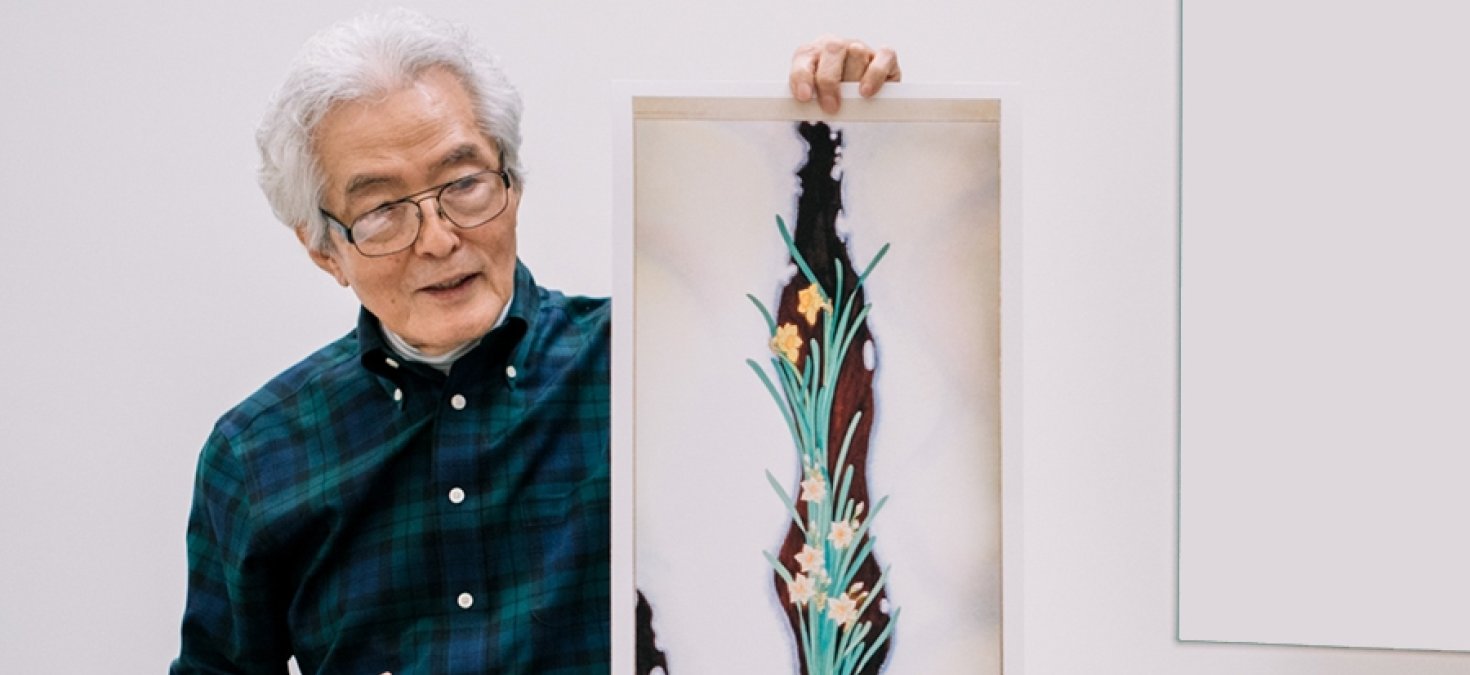
Shozo Sato was a theatre director and master of Zen arts. Born in Japan in 1933, Sato held a degree in Fine Arts from Bunka Gakuin College, Tokyo. Sato was officially adopted into the Kabuki family of Nakamura Kenzaburo XVII, and given the name Nakamura, Kanzo IV. Sato is a master of the highest order of Chado, Japanese Tea Ceremony, Ikebana (flower arranging) and Sumi-e (black ink painting). He has published books extensively on these subjects.
Sato was the founding director of Japan House, a Japanese cultural center serving the University of Illinois, where he is Professor Emeritus. He was granted a Ph.D. from Towson University in 1997 and a D.F.A. from the University of Illinois in 1998.
In 1992, the Minister of Foreign Affairs of Japan awarded Sato the Certificate of Commendation for his promotion of Japanese culture throughout the world. In 2003, he received the first Cultural Achievement Award from the Japan American Society of Chicago. And in 2004, Sato was awarded one of the highest honors, The Order of the Sacred Treasure from the Emperor of Japan. Sato has received national and international recognition for creating a new form of Kabuki in which the plots of well-known Western classics have been adapted to introduce a new genre in the conventions of Kabuki. He has conceived, designed, and directed award-winning productions of Kabuki Lady MacBeth (2005: Chicago Shakespeare Theatre); Iago’s Plot (1996); Achilles: A Kabuki Play (1991); Kabuki Othello (1988); Kabuki Faust (1986); Kabuki Medea (1983); and Kabuki MacBeth (1978). These works have captivated and thrilled audiences throughout Europe, the Middle East, Africa, Japan, and the United States.
In 1992, Shozo Sato retired from teaching and being Director of the original Japan House. He and his wife, Alice Ogura Sato, moved to Northern California where he established the Center for Japanese Art. In 2015, Professor Sato and his wife returned to Champaign where he continued teaching and giving demonstrations. Through his continued support and inspiration are we able to celebrate both the legacy and the future of Japan House.


